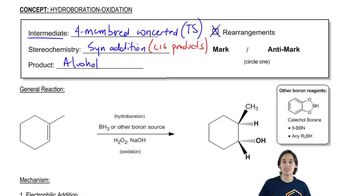Answer Problem 39, parts a–h, using 2-butyne as the starting material instead of propyne.
f. R2BH in THF followed by H2O2/HO− /H2O
 Verified step by step guidance
Verified step by step guidance Verified video answer for a similar problem:
Verified video answer for a similar problem:



 2:43m
2:43mMaster Anti-Markovnikov addition of alcohols to terminal alkynes yields aldehydes with a bite sized video explanation from Johnny
Start learning